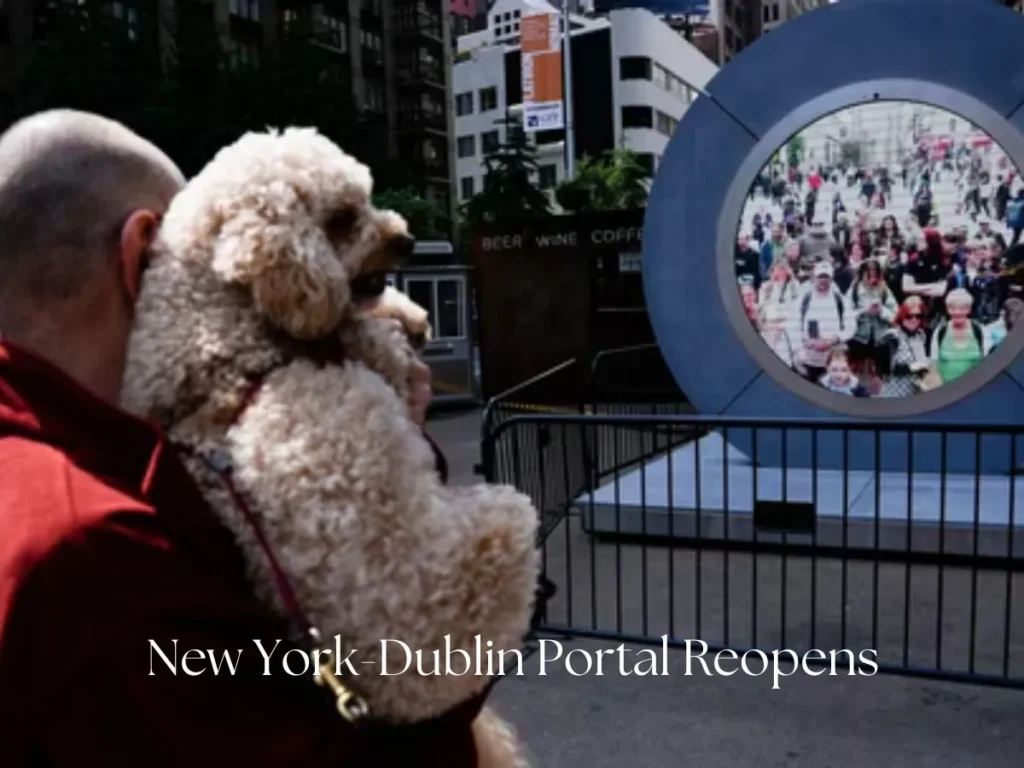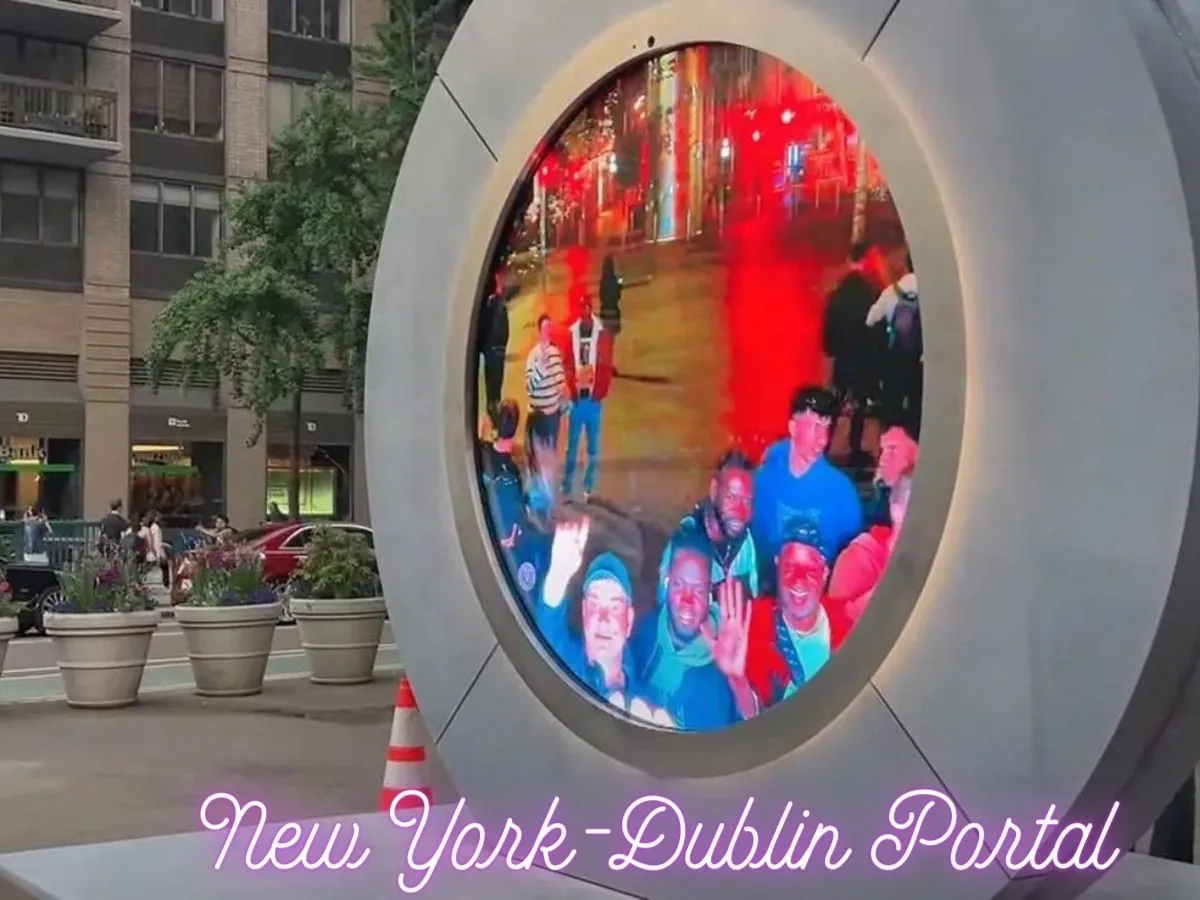Table of Contents
ToggleReopening of New York-Dublin Portal: New Rules and Limited Access
Discover the reopening of the New York-Dublin portal with enhanced security measures and limited hours. Learn about the new rules and improvements designed to ensure a safe and engaging virtual connection between the two cities.
The unique portal linking New York and Dublin, a technological marvel that allows individuals to see but not hear each other across the Atlantic, has reopened with stricter regulations and limited operational hours following a brief closure due to inappropriate visitor behavior.
Background of the New York-Dublin Portal
Initially launched as a groundbreaking project to foster real-time visual communication between two bustling cities, the portal quickly became a hit. Installed by Lithuanian artist Benediktas Gylys, this innovative piece of technology allows people separated by thousands of kilometers to virtually connect and interact visually.
Reason for Closure of New York-Dublin Portal
The portal’s sudden shutdown came as a result of disturbing incidents. Visitors on the Dublin side displayed offensive images, including those related to the 9/11 attacks and swastikas, while an OnlyFans creator in New York exposed herself on the livestream. These actions led to an immediate need for reassessment of the portal’s security and operational protocols.
Reopening of the Portal
After nearly five days of darkness, the portal was reactivated at 9am on a Sunday. This reopening came with a slew of new measures aimed at preventing similar incidents in the future and ensuring a safe and respectful environment for all users.
Operational Hours and Access
Previously available 24/7, the portal now operates with restricted hours from 6am to 4pm. This change is designed to allow for better monitoring and management of the portal, reducing the risk of inappropriate use during off-peak times.
Security Enhancements
Significant security enhancements have been introduced to maintain decorum. Guardrails were installed around the portal to prevent close physical access that could lead to misconduct. Additionally, a proximity-based solution ensures that screens are blurred if a visitor steps onto the portal, thereby obstructing the camera and preventing any offensive visuals from being displayed.

New York Side Enhancements
To further bolster security, the New York side of the portal now features increased police presence, along with fencing and clear signage to guide and manage visitors. These measures are intended to maintain order and quickly address any potential issues.
Dublin Side Enhancements
On the Dublin side, physical design modifications have been implemented to manage crowds effectively. These changes are part of a comprehensive strategy to ensure that the portal remains a welcoming and safe space for everyone.
Ongoing Updates and Adjustments
The organizing team has committed to continuously monitoring the portal and making necessary updates to its operation. This proactive approach aims to address any emerging challenges and enhance the user experience.
Cultural and Social Impact
The portal has a profound cultural and social impact, providing a unique opportunity for people in New York and Dublin to connect visually. This virtual bridge fosters a sense of global community and shared human experience, despite the physical distance.
Artistic and Technical Aspects
Benediktas Gylys, the artist behind this project, has created a blend of art and technology that captivates and connects. The portal’s technical setup includes high-definition screens and cameras, meticulously installed to provide a seamless visual experience.
Challenges and Controversies
The inappropriate behaviors that led to the portal’s temporary closure highlight the challenges of managing public installations. Balancing accessibility with security remains a delicate task, requiring ongoing adjustments and vigilance.
Future Prospects
Looking ahead, there is potential for similar projects to be implemented in other cities, expanding the reach of this innovative concept. Future advancements in technology could further enhance the portal’s capabilities, making it an even more integral part of urban public spaces.
Conclusion
The New York-Dublin portal stands as a testament to human ingenuity and the desire to connect across vast distances. With its new rules and security measures, it promises to continue offering a unique window into another world, fostering connections and understanding between people from different cultures.
